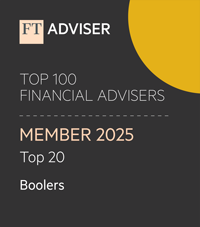Reveal Menu
Growth vs income: How investment strategies differ

Simon Woodhead









When investing, it’s important to consider what you’re investing for. Without a goal in mind, it’s difficult to build a portfolio that’s right for you. This includes choosing whether income or growth investment strategies should be your focus. These are two broad definitions that are used by funds. They should also be a consideration when building your own portfolio.
Let’s go back to basics to begin with; what do income and growth mean?
Growth: The aim of a growth investment strategy is to grow the original sum by as much as possible. As a result, growth companies that are investing in the business are more often used. The goal is to find businesses that have the capability to grow quickly, often newer companies. Every sector has growth companies. But there is more choice in certain areas, such as technology and sustainable energy.
Income: An income investment strategy will usually focus on mature companies. This often means they don’t need to put cash back into the business. Therefore, they can pay dividends to investors. Hopefully, this creates a reliable income stream. These types of companies are often seen as less risky, but there is still risk involved.
Which of the investment strategies is right for you, will depend on your aspirations.
Risk and volatility with growth and income investment strategies
So, your investment goals play an important role in choosing between investment strategies. What else should you keep in mind when weighing up growth and income options?
Risk
All investments carry risks. However, the level of risk varies depending on a range of factors.
Typically, you’d expect growth investment strategies to carry more risk. This is because they’ll often select potentially high growth companies to invest in. It presents an opportunity for higher returns. But comes with an increased chance that you will lose money.
Before making an investment decision, it’s essential you consider your risk profile. For some, taking more risk is worth it when you consider potential rewards. Others will find a conservative approach is appropriate. Your risk profile should take into account a range of areas. These may include other assets, capacity for loss and overall attitude.
Volatility
Risk and volatility are often confused but are different things. Volatility describes how the value of investments fluctuates over the short term.
An income investment strategy will tend to be less volatile. This is because an income portfolio aims to provide steady returns. As a result, reliability is favoured. Of course, that’s not to say some volatility won’t occur, which could affect the income delivered.
In contrast, you can expect a growth portfolio to experience peaks and troughs over the short term. It can be worrying when investment values fall, but you should focus on the long-term trend.
Creating a balanced investment portfolio
Remember, your investment portfolios don’t have to choose between growth and income. When creating a balanced portfolio, it may become evident you could benefit from both strategies. You may, for example. Invest for growth for retirement that is still 20 years away but also invest to create an income now. As with all aspects of financial planning, you should tailor investments to you.
It’s also worth noting that you can reinvest dividends received from an income investment strategy for growth. Alternatively, you can sell stocks and shares to create an income from a portfolio focussed on growth. It isn’t always as straightforward as selecting ‘growth’ or ‘income’.
As you build a balanced portfolio, you should consider areas such as risk, timeframes and more. In addition, you should also look where you’ll invest to help spread risk. This may include geographical locations, industries, and size of business. If you’d like to review your investment strategy, please contact us. We’re here to help you align investment decisions with your financial goals.
Please note: The value of your investment can go down as well as up and you may not get back the full amount you invested. Past performance is not a reliable indicator of future performance.
“At Boolers, you know that things will be dealt with properly and professionally. A real safe pair of hands!”
“I have always found the quality of advice, technical knowledge and level of service is second to none. ”
“Thank you to all of you for such a wonderfully smooth transaction! Hope we can do it again some time.”
“Boolers provided excellent advice when we needed it most.”
“Boolers have provided myself, family and business with pension and investment advice for over 30 years and continue to provide a high quality professional service to us all on an ongoing basis.”
“Chris Ball has been our Financial Adviser for many years and, from the start, we have been impressed with his strategic sense, his deep knowledge and his skills in helping us build our own successful retirement. He understands our aims and how to achieve them and has taken great care of us throughout. ”



